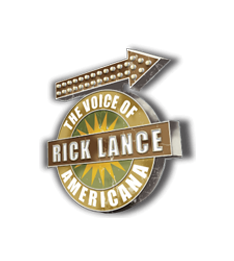Ever wondered why some documentary narrations feel effortless to follow?
Why do some voices seem to hold your attention from the first word to the last?
Can poor articulation damage your message—even when your content is strong?
Let’s break the silence and spotlight two of the most overlooked elements of narration: articulation and pronunciation.
The Power of Precision in Speech
In the world of voice over for documentaries, your voice doesn’t just carry words—it carries weight. Every syllable matters. The crisper your articulation, the more accessible your message becomes to a diverse audience, including those who rely on clarity due to cognitive, hearing, or linguistic differences.
Here’s a fact that might surprise you:
85% of viewers say clear narration improves their understanding of documentary content.
(Source: Nielsen Norman Group, 2023)
This isn’t just about sounding good—it’s about being understood.
Clean Articulation: The Unsung Hero of Narration
Articulation is your vocal craftsmanship. It’s how you shape words in the mouth—how cleanly you form consonants, how fluently you glide through vowels. In documentary narration, this matters more than ever.
Myth #1: “If you have a great voice, articulation doesn’t matter.”
Truth? A beautiful voice without clarity is like a high-end camera with a blurry lens—technically impressive, but practically useless.
Want to hold your audience from start to finish?
Want to really land that powerful final line?
You’ll need to make every word count.
Professional Pronunciation: When Accuracy Equals Authority
Mispronouncing a name, scientific term, or cultural reference? That can hurt your credibility in seconds.
Myth #2: “Audiences won’t notice minor pronunciation issues.”
Actually, they will—and they do. In fact, mismatched pronunciation is one of the top reasons viewers disengage from a documentary narration.
Correct pronunciation enhances professionalism and reinforces trust. It also shows respect—for the subject, the viewer, and the production.
Why It’s Non-Negotiable for Documentaries?
When you’re delivering a voice over for a documentary, you’re more than a narrator—you’re the conduit between the story and the viewer. If articulation is off, or pronunciation inconsistent, the audience is distracted. The message gets lost.
This isn’t about being overly perfect. It’s about being intentionally clear.
Imagine narrating a piece on endangered species—and mispronouncing the species name.
Or presenting a historical figure with regional mispronunciation—alienating a chunk of your audience.
It’s those moments that make or break trust!
Are you sabotaging your own delivery?
You might be surprised how a minor lapse in diction can undo the impact of an otherwise powerful script…
Clear Narration Techniques That Elevate Your Game
- Slow down slightly. Rushed narration kills clarity.
- Use neutral, clean enunciation. It boosts comprehension across demographics.
- Practice difficult words. A few reps can prevent a major misstep.
- Record, listen, adjust. Professional narration is crafted, not winged.
One of the industry veterans, Rick Lance, makes it a point to match all the standards expected in professional narration—refining articulation and pronunciation until each read reflects the tone, integrity, and clarity the project demands.
Think Your Voice Is Enough? Think Again.
Even seasoned professionals miss out on key gigs—simply because they didn’t train their articulation muscles…
So, What’s the Takeaway for Producers and Clients?
If you’re hiring a voice over artist for your next documentary, don’t just listen for tone or texture. Ask:
- Can they handle scientific or cultural terms?
- Do they match the pace and tone of your film?
- Are they trained in clear narration techniques?
Investing in voice over for documentaries with the right articulation and pronunciation isn’t just professional—it’s essential. Your story deserves nothing less than complete clarity.
“In documentary voiceover, clarity isn’t a feature—it’s the foundation.”

